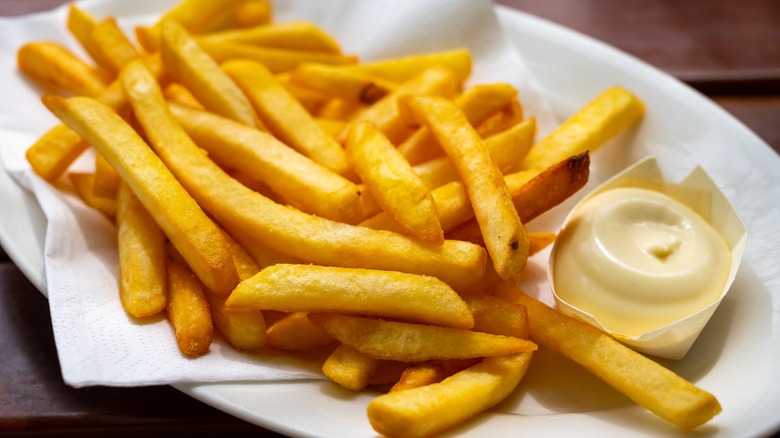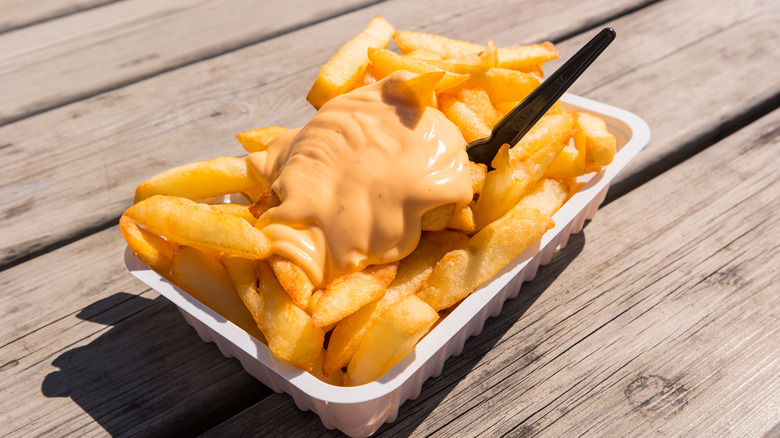How Sauce Andalouse Became The Go-To Dip For Eating French Fries In Belgium
Fries are a big deal in Belgium: They've been making them since the 1700s, and despite their name, Belgium (not France) is often considered to be the home of french fries. If you travel there, you'll find them served as street food at plenty of frietkots or friteries, as purveyors of fried potatoes are known in Flemish and French respectively. When you order, you'll likely be presented with a long menu of sauces to accompany your fries. Classic ketchup is on there, as is oh-so-European mayonnaise, and options that will likely be unfamiliar to Americans, like samurai sauce (made with harissa, tomatoes, and peppers), or the curious pineapple-mayo combination that is Brazil sauce. Beyond classic mayo, perhaps the most popular option is sauce andalouse — by name, you'd think it hails from the Andalusia region of Spain, but it's entirely a Belgian creation.
Sauce andalouse is made with mayo, lemon juice, tomato paste, minced onions, and red and green peppers. Some versions may call for shallots (in place of onions), paprika, and mustard. While often compared to Thousand Island dressing (more or less a mix of ketchup and mayo), andalouse's unique combination of flavors is likely why it is so popular in Belgium. Its creamy mayo base gets an acidic kick from the lemon and peppers, plus unctuous umami from the tomato paste, resulting in a phenomenally well-rounded condiment for dipping.
The invention of sauce andalouse
Despite its immense popularity, sauce andalouse hasn't been around for nearly as long as centuries-old mayonnaise. A Belgian company called La William claims to have created the sauce around 40 years ago, having based it loosely on gazpacho. (For the record, gazpacho does feature tomato, peppers, and onions, but definitely no mayonnaise, while sauce andalouse drops the cucumbers that are typically included in gazpacho.)
La William is apparently quite the prolific sauce-maker, also staking a claim to the invention of the fairly common Brasil sauce, with its sweet-spicy mayonnaise, pineapple, and curry powder combination. They also invented riche sauce, a pink tartare colored with cranberries. One other company, Anda Premium Sauces, also claims to be the originator of sauce andalouse, with its founder Lea De Boeck-Vandenwyngaert having created it in the late 1960s, although few other sources back up this story. Whatever the case, the orange-tinted accompaniment is now produced and sold by a number of companies.
Sauce andalouse isn't just used for phenomenally crispy double-fried Belgian french fries, although that might be its most common use. In France, you might find the condiment added to kebabs, while in Belgium it can crop up in a lot of places. Its purported original maker, La William, recommends using it with red meat, while it can work well with fish, and also appears on the mitraillette, a Belgian sandwich featuring ground meat or sausage as well as fries.

